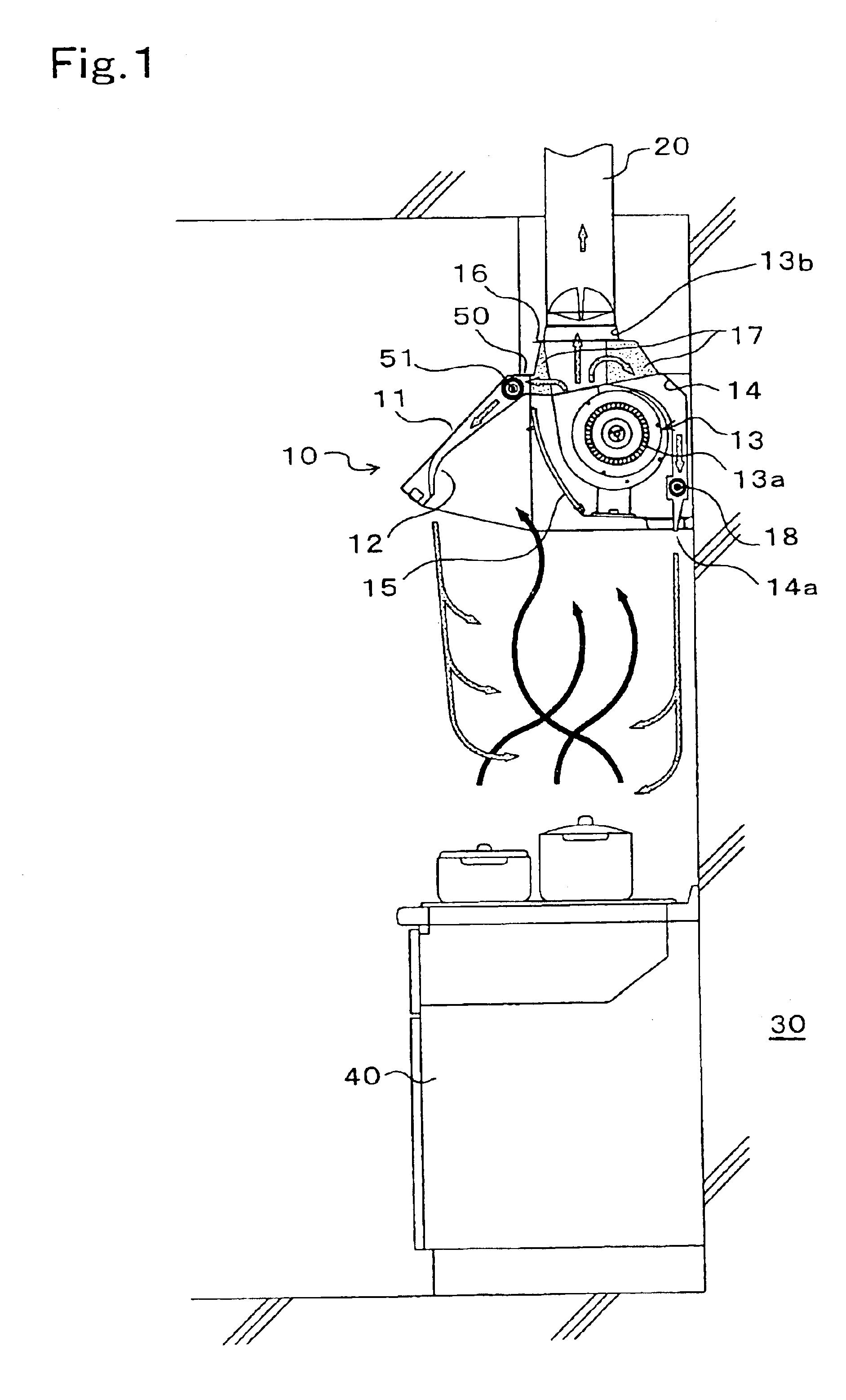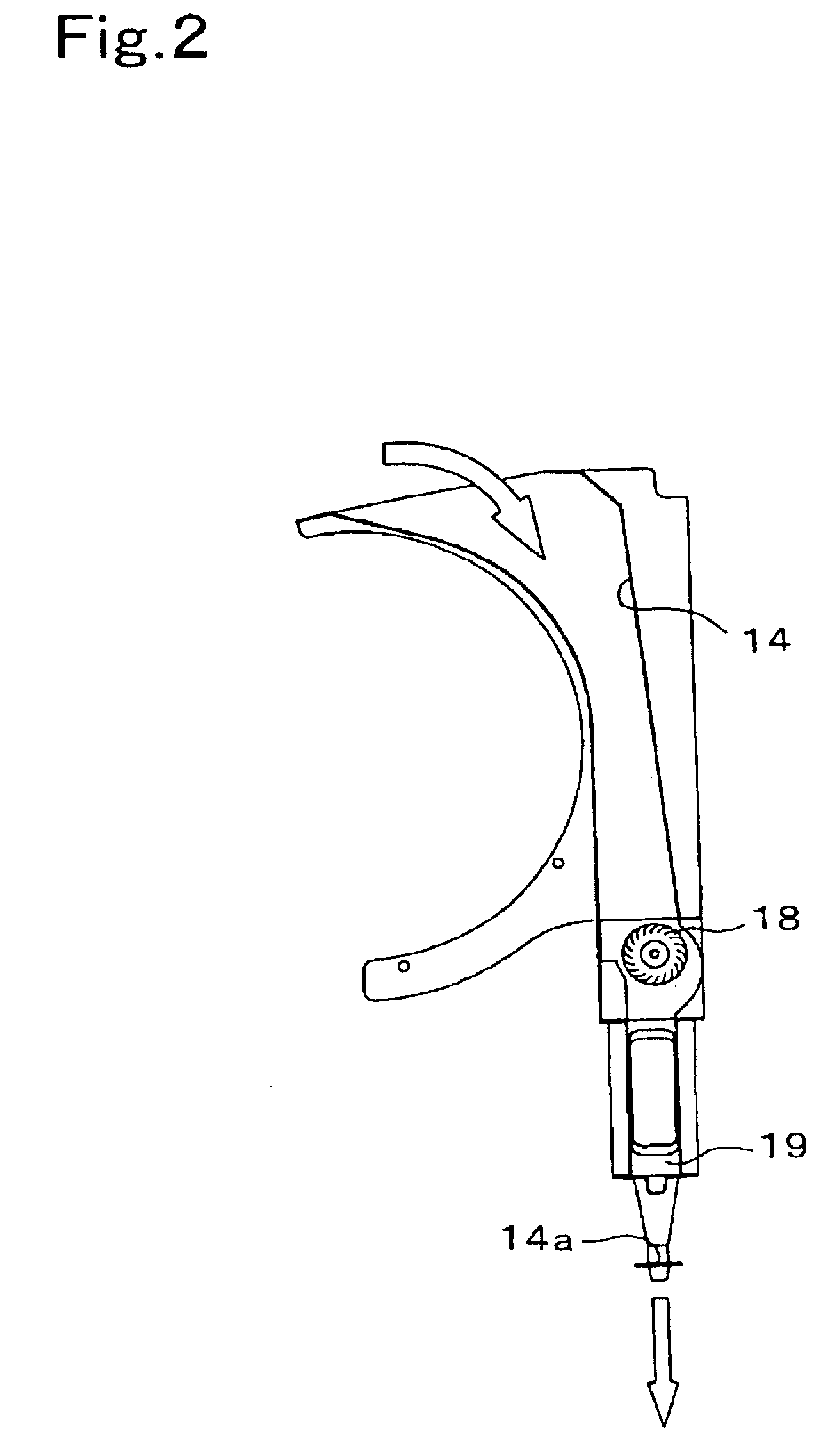Range hood
a range hood and hood technology, applied in the field of range hoods, can solve the problems of inability to form, inability to satisfy the ascending air current like emitted gas, inability to produce satisfactory ascending air current, and inability to spread in the kitchen
- Summary
- Abstract
- Description
- Claims
- Application Information
AI Technical Summary
Benefits of technology
Problems solved by technology
Method used
Image
Examples
Embodiment Construction
[0057]Now, referring to the drawings, a range hood 10, which is an embodiment of the present invention, will be described below. In the range hood 10 in accordance with this embodiment, in the case of cooking appliance that burns a fuel gas, “emitted gas containing oily smoke and the like” is generated. And in the case of cooking appliance that uses electricity, such as electromagnetic cooking appliances, “air containing oily smoke” flows in the range hood 10. In any case, it is assumed that matters, which are drawn by an evacuating fan 13, are referred to as “emitted gas”.
[0058]In FIG. 1 and FIG. 4 are sectional views respectively showing a kitchen range 40 disposed at the front face side of an interior wall 30 of a kitchen, and the range hood 10 in accordance with the present invention, which is located over the range 40 and installed on the interior wall 30 at the front face side thereof. The range hood 10 is for evacuating air or emitted gas, which contains vapor generated by co...
PUM
 Login to View More
Login to View More Abstract
Description
Claims
Application Information
 Login to View More
Login to View More - R&D
- Intellectual Property
- Life Sciences
- Materials
- Tech Scout
- Unparalleled Data Quality
- Higher Quality Content
- 60% Fewer Hallucinations
Browse by: Latest US Patents, China's latest patents, Technical Efficacy Thesaurus, Application Domain, Technology Topic, Popular Technical Reports.
© 2025 PatSnap. All rights reserved.Legal|Privacy policy|Modern Slavery Act Transparency Statement|Sitemap|About US| Contact US: help@patsnap.com



